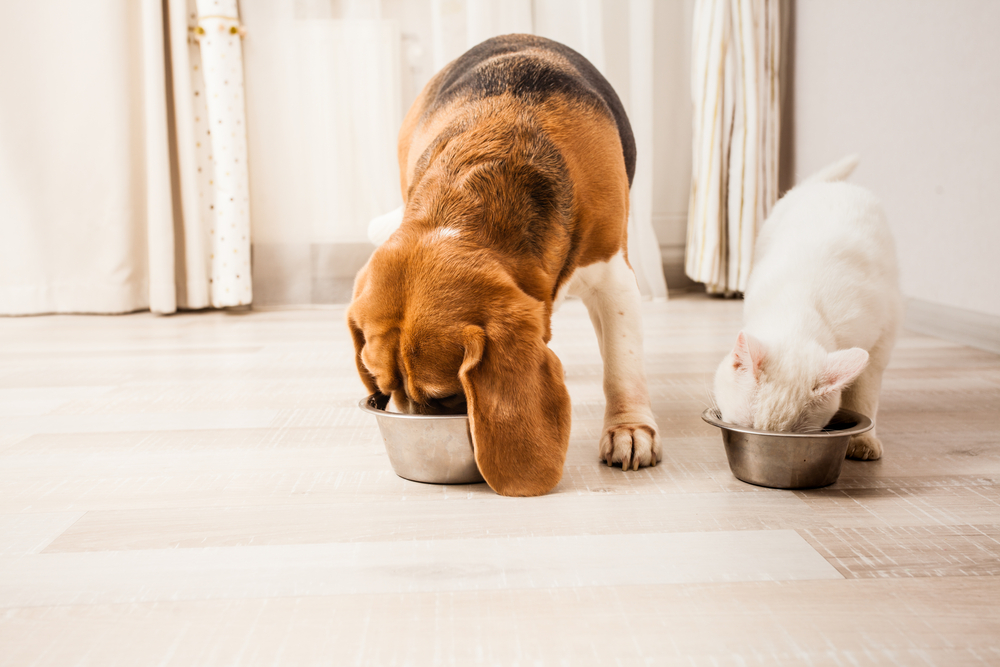Courtesy of the Niagara Frontier Veterinary Society
With pet owners continually blasted with representations by pet food companies touting their foods as superior, it’s hard to separate fact from fiction. Consider the following information to help guide you.
Age Matters. As with human babies and adults, kittens and puppies have different nutritional needs than adult pets. Young pets need high-calorie, energy-dense food to grow, and essential nutrients to support their development. Kittens and small dogs can transition to adult food by age 6 to 9 months. Larger dogs can remain on large-breed puppy food until they are 1, or transition sooner, if it is not a food intended for large-breeds. Senior dogs, usually considered over 7, have lower nutritional needs, as their activity and metabolism change.
Small and Large Breed Dogs. Large breed dogs require nutritional balance to accommodate their growth needs and prevent bone and joint problems. Small breeds may not tolerate large-sized kibble.
Wet or Dry? Most people feed their pets dry kibble or canned wet food. While not appealing to us, they are safe, nutritionally balanced options. The primary differences between wet and dry foods are cooking processes and moisture content. For pets that don’t drink enough water, wet food helps support hydration needs. Wet food is also more suitable for pets with dental or urinary issues. Do extensive research and consult your veterinarian before feeding a raw food diet to your pet. Raw diets have human and pet health risks.
Cats and Dogs are Different! Cats are strict carnivores, but dogs are not. While meat is the primary ingredient in a cat’s food, dogs get many of their nutrients from grains, fruits, and vegetables. Good dog foods contain meat, vegetables, grains, fruits, and by-products. Grain-free diets have been linked to heart problems in pets.
Obesity. As with humans, pet obesity is linked to many health problems. Knowing how much to feed your pet can be challenging, especially if table scraps and treats are offered. Discuss how much to feed them at their annual veterinary visit.
What is a Good Food? Look for the complete and balanced foods that meet AAFCO nutritional guidelines. Labels help, but can be misleading. They must include the product name, net weight, manufacturer name/address, ingredient list, and percentages. Labels do not list ingredient quality or source. Additionally, manufacturers can change or divide the ingredient listing order. For instance, flaked, ground, and kibbled corn can be listed separately, moving corn down the list, when the actual corn content is high. Beef or chicken means that it comprises 70 percent of the entire product. However, beef or chicken dinner, entrée, or platter requires only 10 percent content. Beef or chicken only requires 3 percent content, and beef or chicken flavor less than 3 percent.
Preservatives and Expiration Dates. Most pet food includes both artificial and natural preservatives to keep it shelf-stable and prevent spoiling. If you’ve stocked up on pet food during Covid, check expiration dates.
The Niagara Frontier Veterinary Society consists of more than 75 small animal hospitals and 200 veterinarians in Erie and Niagara counties. Learn more at www.nfveterinarysociety.org.











